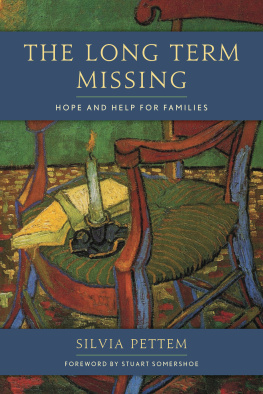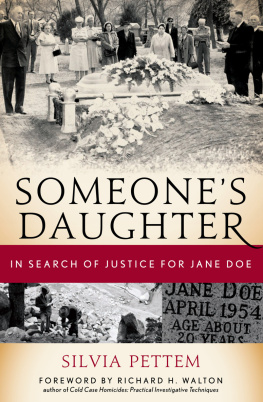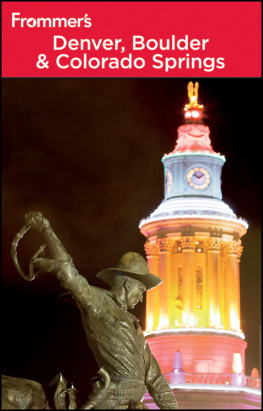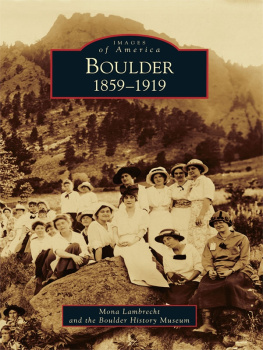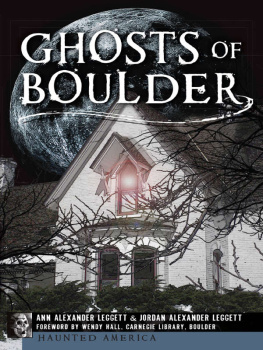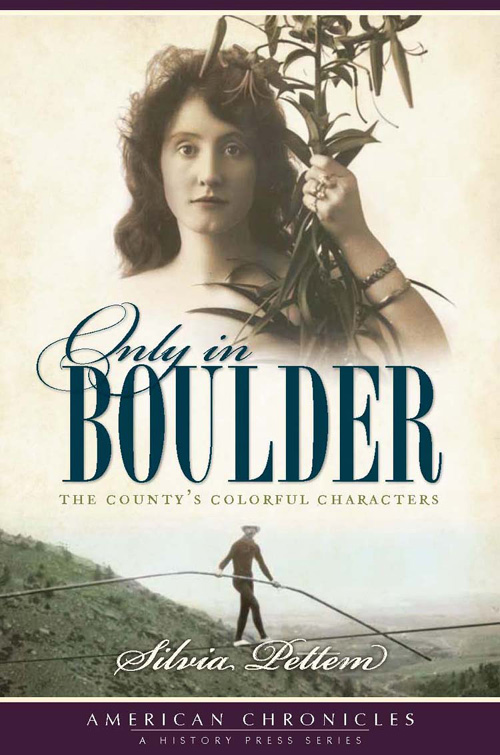Only in
BOULDER
THE COUNTY S COLORFUL CHARACTERS
Silvia Pettem

Published by The History Press
Charleston, SC 29403
www.historypress.net
Copyright 2010 by Silvia Pettem
All rights reserved
Cover images: On the front cover are Edith DeLong and Ivy Baldwin. On the back are Joseph Bevier Sturtevant, Charles Parsons and two unindentified men at the First National Bank. All photos courtesy of the Carnegie Branch Library for Local History, Boulder Historical Society Collection.
First published 2010
e-book edition 2011
ISBN 978.1.61423.060.1
Pettem, Silvia.
Only in Boulder : the countys colorful characters / Silvia Pettem.
p. cm.
Includes index.
print edition: ISBN 978-1-59629-975-7
1. Boulder (Colo.)--Biography. 2. Boulder County (Colo.)--Biography. 3. Boulder (Colo.)--Social life and customs--Anecdotes. 4. Boulder County (Colo.)--Social life and customs--Anecdotes. 5. Boulder (Colo.)--History--Anecdotes. 6. Boulder County (Colo.)--History--Anecdotes. I. Title.
F784.B66P49 2010
978.8630099--dc22
2010015344
Notice: The information in this book is true and complete to the best of our knowledge. It is offered without guarantee on the part of the author or The History Press. The author and The History Press disclaim all liability in connection with the use of this book.
All rights reserved. No part of this book may be reproduced or transmitted in any form whatsoever without prior written permission from the publisher except in the case of brief quotations embodied in critical articles and reviews
Contents
Acknowledgements
Many people contributed to this book, but I would like to thank those who helped the mostmy editors at the Daily Camera, the librarians at the Carnegie Branch Library for Local History and the trustees of the Boulder History Museum.
Only in Boulder: The Countys Colorful Characters is a collection of sixty history columns first published (and reprinted with permission) by the Camera during the years 19982010. My first editor was Maria Cote, followed by Jay Dedrick, Lisa Marshall, Sandra Fish, Greg Glasgow, Erika Stutzman, Cindy Sutter and Dave Burdick. Special thanks also go to former Camera librarian Carol Taylor, past executive editor Thad Keyes and present executive editor Kevin Kaufman.
Wendy Hall, Mary Jo Reitsema and Marti Andersonof the Carnegie Branch Library for Local History in Boulderoffered invaluable assistance in helping me select and procure photographs that best illustrate the stories.
Im grateful, too, to Nancy Geyer, executive director and CEO of the Boulder History Museum, for the museums partnership with this project, which allowed me the use of several of the museums photographs. The Colorado State Archives and Alan Cass contributed photographs, as well.
PART I
Early Residents and Visitors
C HIEF N IWOT S C URSE W AS AN E ARLY A TTEMPT AT G ROWTH C ONTROL
In November 1858, when the first gold prospectors settled in for the winter near what is now Boulder, Colorado, a tribe of Arapahos was camped nearby. No one recorded the conversation, but Arapaho chief Niwot (also known as Chief Left Hand) supposedly claimed that the Boulder valley was so beautiful that people seeing it will want to stayand that their staying will be the undoing of its beauty.
The chiefs comments, which folklore has renamed his curse, was most likely an early attempt at growth control.
The story was first recorded twenty-two years later by journalist Amos Bixby in his 1880 history of Boulder, published as part of a larger volume titled History of Clear Creek and Boulder Valleys, Colorado. Bixby related a verbal account given by Captain Thomas Aikins, one of the prospectors, who said that the chief had assumed an air of authority.
Go away, Chief Niwot had commanded. You come to kill our game, to burn our wood, and to destroy our grass. According to Bixby, the chief had intended to drive off the white men, but the crafty gold-seekers fed and flattered him until he promised that his men and the prospectors would live together in peace.

Chief Niwots bronze bust, on the Boulder County Courthouse lawn, commemorates the Arapahos who preceded the miners and settlers in the Boulder area. Photo by the author.
Another chief, Bear Head, thought that Chief Niwot was making a mistake. Bear Head went to the prospectors camp and began his complaint with a superstitious allusion to a comet then visible in the night sky.
Bear Head asked the prospectors if they remembered the year 1832when the stars fell. Pointing to the comet, he asked, Do you know what that star with a pointer means? Then he was quoted as saying, The pointer points back to when the stars fell as thick as the tears of our women shall fall when you come to drive us away.
In his account, Bixby stated that Bear Head turned and gave the gold-seekers just three days in which to leave the region. In the Indian encampment, Manywhips, an orator, harangued each night, concluding every sentence with the words, Something must be done! In flowery prose, Bixby wrote that all the squaws made mournful response, in their style of savage chorus.
On the morning of the third day, Chief Niwot approached the well-fortified log house of the gold prospectors alone. As noted by Bixby, he bowed low, and feigning humility and distress, he was invited in.
Chief Niwot then related a dream. He said that he had stood on a hill and watched Boulder Creek swell to a flood. His people were swallowed up by the rush of waters, while the white people were saved.
It was supposed that this story, the invention of savage imagination, stated Bixby, was made up as an excuse for declining to fight for the possession of the country, as the Indians had threatened to do.
The Arapahos had avoided conflict with a face-saving solution. They moved on but left behind their names. Among locations we have Arapahoe Avenue (with an e), Arapaho Glacier (without an e), the town of Niwot, Niwot Ridge, Left Hand Creek and Left Hand Canyon, as well as numerous businesses named Arapahoe, Niwot and Left Hand.
Was Chief Niwot trying to tell us something? You decide.
A C ENTURY A GO , E MMA B ROOKFIELD W AS B OULDER S O LDEST O LD-TIMER
When Boulder celebrated its fiftieth birthday in 1909, practically everyone in the town of nine thousand knew Emma Brookfield. Her late husband, Alfred Brookfield, had come west with the first party of gold-seekers and had served as president of the Boulder City Town Companyfounders of the city on February 10, 1859.

Emma Brookfield, one of Boulders first female settlers, reigned over the citys semicentennial celebration in 1909. Courtesy of the author.
Emma was one of Boulders first female settlers. At the citys 1909 semicentennial celebration, newspaper writers called her Boulders grand old lady and honored her as the citys oldest surviving old-timer.


